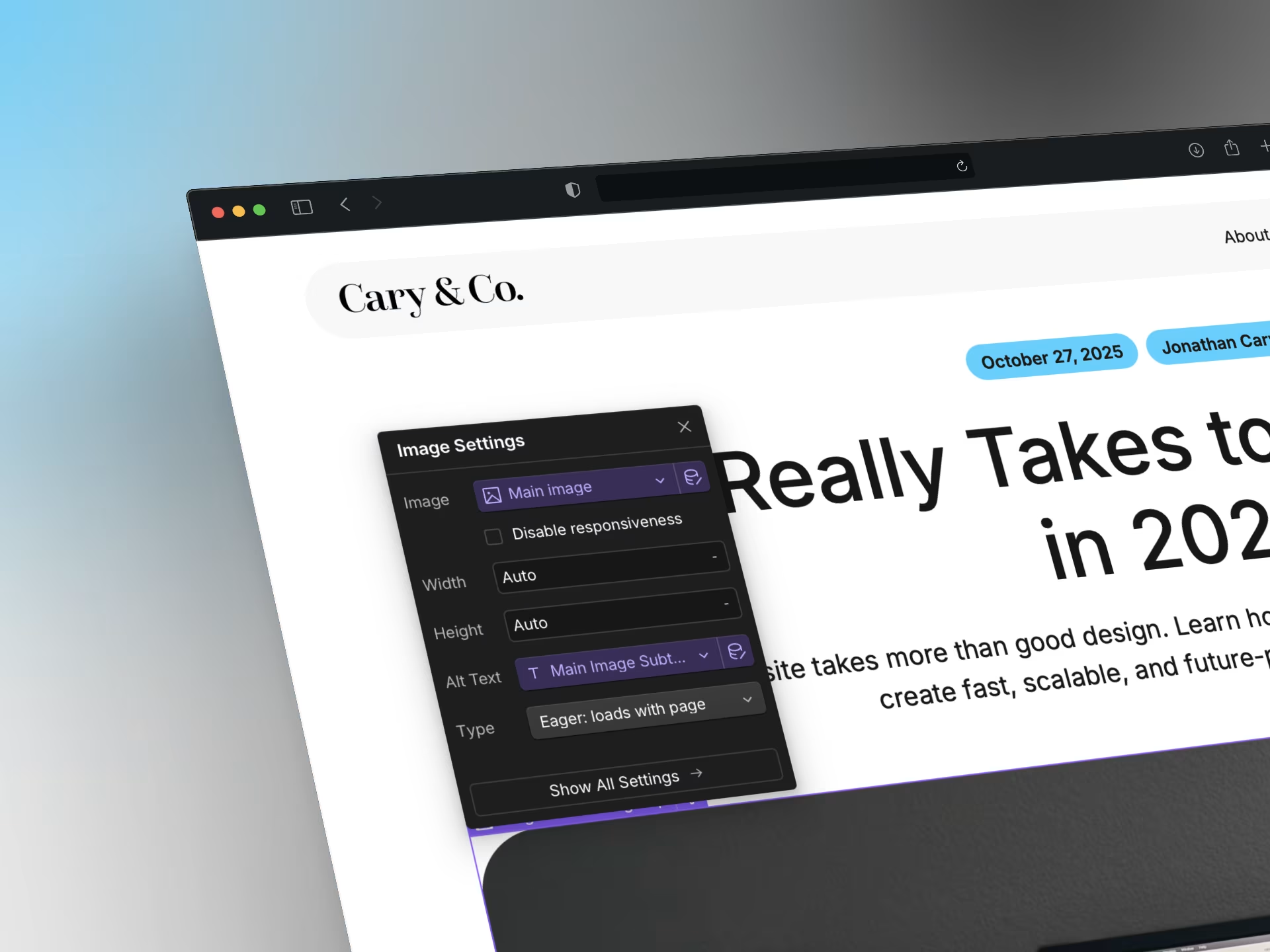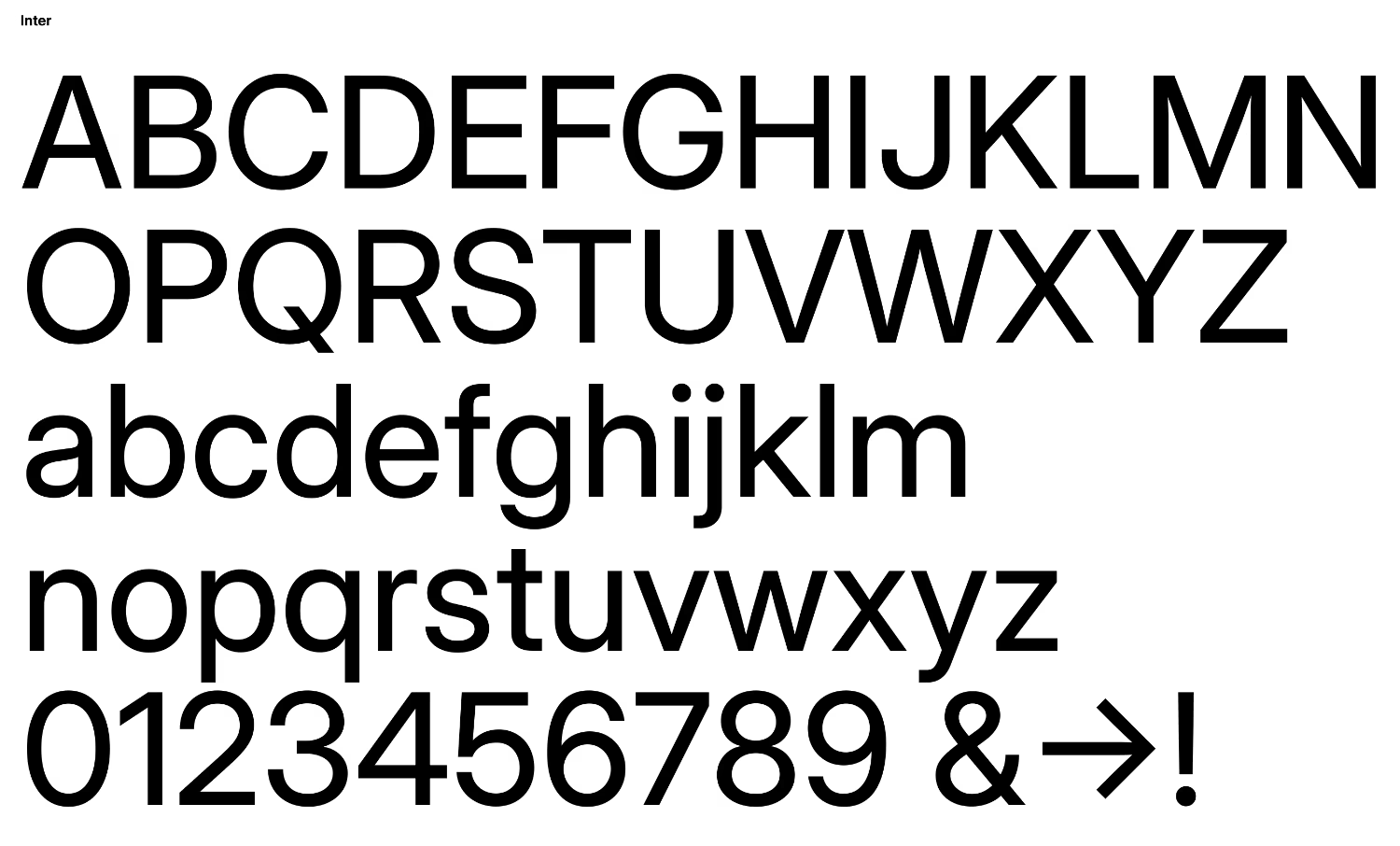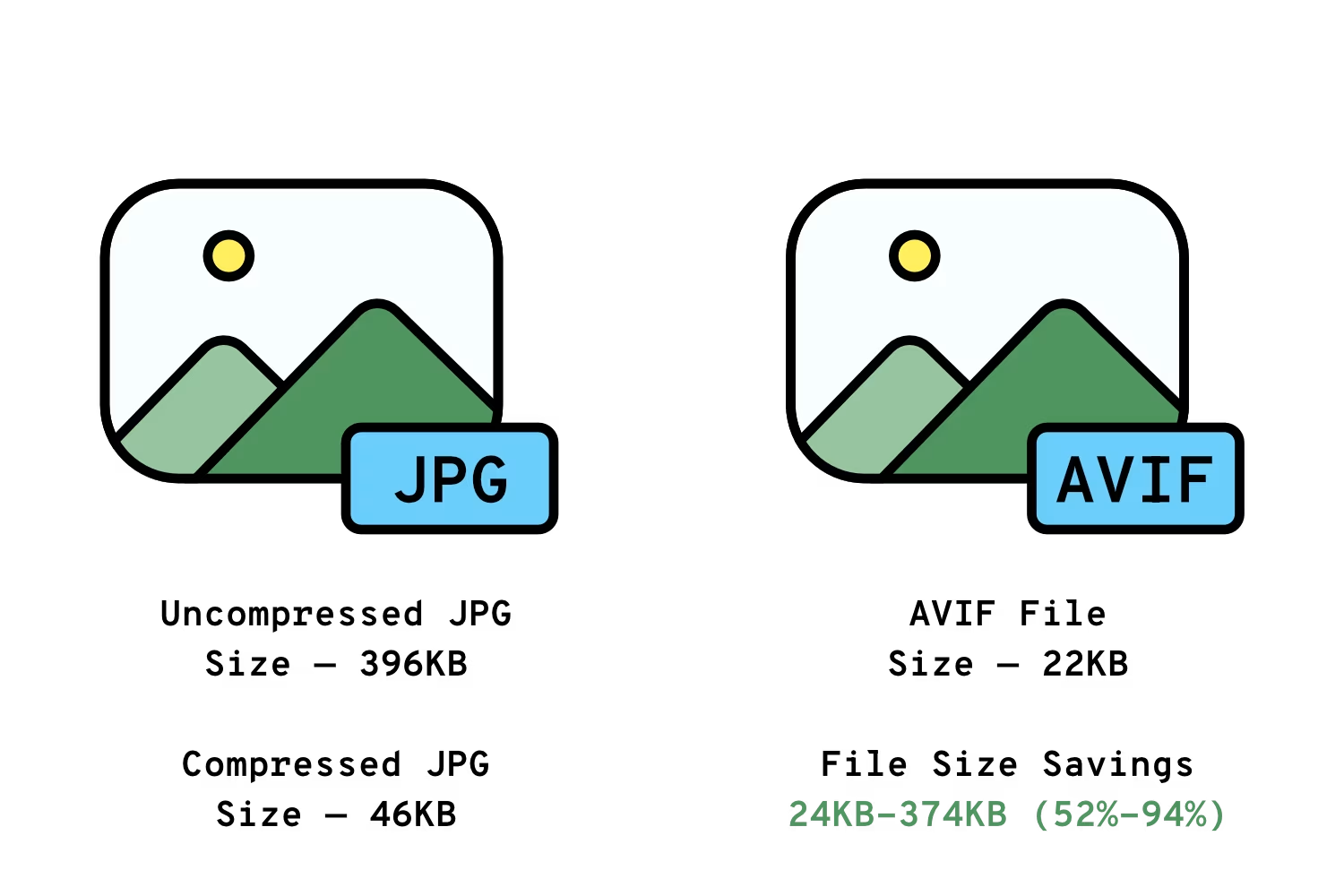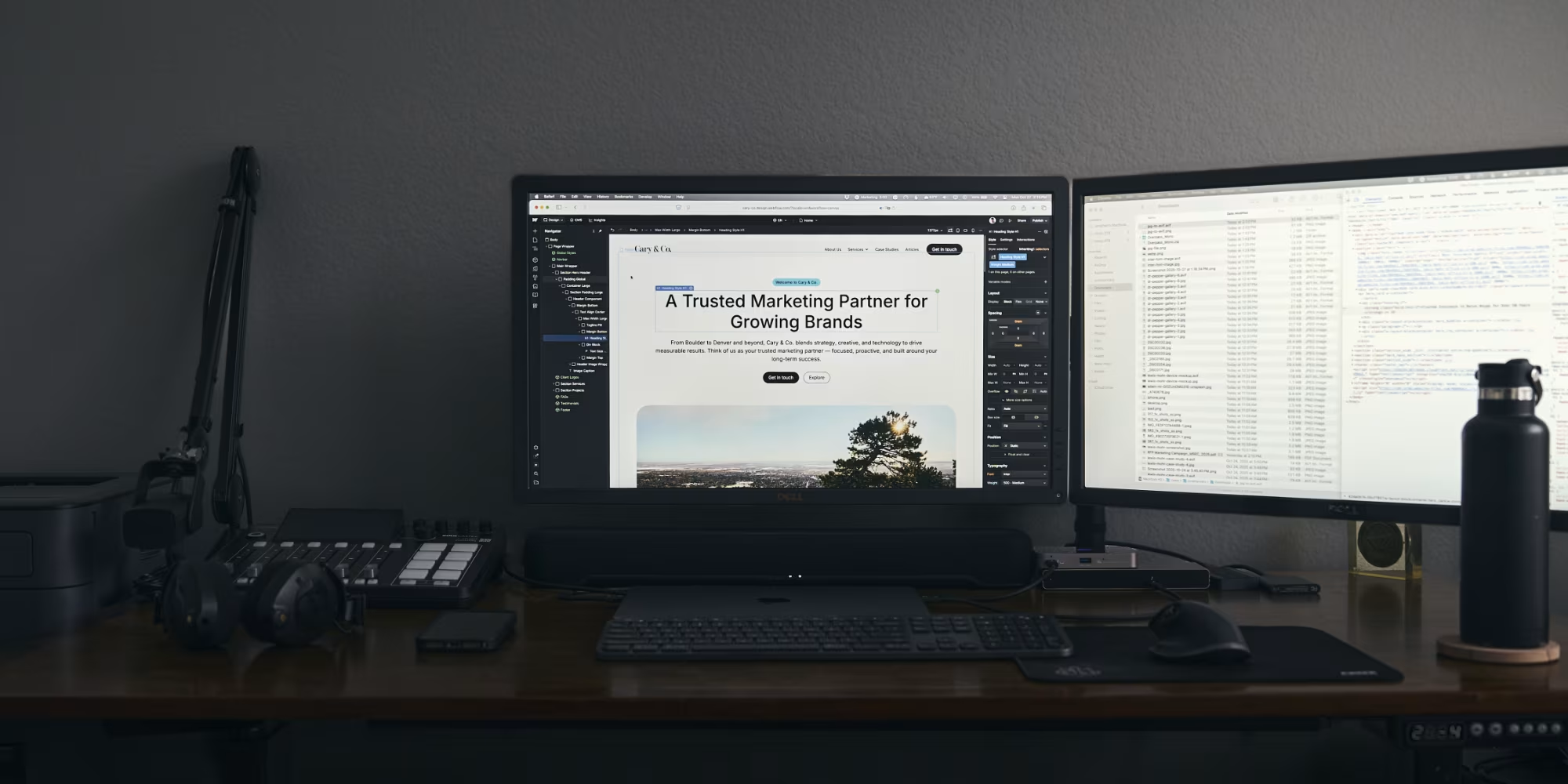For many businesses, “getting a new website” still sounds like a one-time project: hire a designer, pick a template, launch, and move on. But in 2025, that mindset is outdated. The truth is that building a website today is closer to building a product — it requires strategy, infrastructure, and iteration.
At Cary & Co., we’ve built sites for brands that launched years ago and are now feeling the limits of what once felt cutting-edge. What we’ve learned is simple: modern websites aren’t built for today — they’re built to last.
The Modern Website as Infrastructure
Today’s websites sit at the center of a brand’s digital ecosystem. They feed marketing automation, CRM data, and analytics platforms. They’re optimized for both human readers and AI-driven systems that interpret and summarize their content.
That complexity demands long-term planning. The average small-business website lasts around five years before being rebuilt, according to Orbit Media’s 2024 Web Design Survey. Yet most organizations only invest in performance or content updates during major redesigns. That’s like buying a new car and never changing the oil.
A durable website requires a maintainable CMS, clean design systems, and clear ownership — not a set of brittle templates that break the moment you update them.
Platform Choice: Flexibility Over Flash
There’s no one-size-fits-all platform. Some companies thrive with a visual CMS like Webflow, which lets non-developers update content while maintaining strong technical SEO. Others need a headless system such as Contentful, Sanity, or Strapi, where content can flow to multiple front ends — a website, mobile app, or digital display.

What matters most is long-term flexibility. Websites shouldn’t depend on a single plugin, developer, or hosting vendor. Choose tools you can actually maintain. If the marketing team can’t update a landing page without a developer ticket, the system isn’t serving the business — the business is serving the system.
Design That Scales and Ages Well
Design trends move faster than technology cycles, so longevity depends on restraint. Clean typography, measured motion, and consistent hierarchy outlast fads. Inter, Poppins, and other open-source variable fonts have become mainstays precisely because they balance modern form with utility.

Scalable design systems — reusable color tokens, component libraries, and spacing conventions — make it possible to evolve visually without reinventing everything. Sites that rely on one-off layouts or unstructured content quickly become impossible to manage.
For smaller teams, visual CMS tools now make it realistic to maintain design consistency without a dedicated front-end developer. A structured design system pays for itself the first time you avoid a rebuild.
Performance: Fast Is Expected
According to Google’s research, a one-second delay in load time can reduce conversions by up to 20%. Core Web Vitals — particularly Largest Contentful Paint (LCP) and Cumulative Layout Shift (CLS) — remain the most reliable proxies for user experience.
Optimizing for speed isn’t about chasing perfect Lighthouse scores; it’s about ensuring positive user experiences. Image formats like AVIF and WebP now outperform JPEG in compression and quality, reducing page weight by up to 30–50%. Lazy loading, asynchronous scripts, and a solid CDN make the difference between a page that feels responsive and one that hemorrhages visitors.

The best performance strategy is proactive monitoring. Set up reports to alert your team when key metrics slip. Page speed doesn’t stay fixed — it erodes with every new script and marketing pixel added over time.
SEO and the Rise of Answer Engine Optimization (AEO)
Search isn’t just blue links anymore. Between AI Overviews, ChatGPT, and Perplexity, people increasingly get answers from summarized sources instead of full-page clicks. That shift is transforming SEO into AEO — Answer Engine Optimization.
To prepare, websites must make content easy for AI systems to understand. That includes clean HTML structure, proper heading hierarchy, and structured data markup like LocalBusiness, Product, and Article schema.
Credibility also matters more than ever. Google’s E-E-A-T framework (Experience, Expertise, Authoritativeness, and Trustworthiness) rewards content written or reviewed by identifiable experts. Listing authors, bios, and source citations signals reliability not just to readers, but to AI systems that decide whose answer to quote.
In short: clear organization and verifiable expertise aren’t just nice touches — they’re the new visibility strategy.
Content Architecture and Dynamic CMS Design
The biggest hidden strength of modern websites lies in how content connects. A dynamic CMS can automatically relate articles, services, and locations — for example, showing “related posts” or surfacing blog articles tied to a product category.
This approach reduces maintenance while improving discoverability. Instead of building separate silos, design a single content model that mirrors your business: services, people, case studies, resources, and FAQs all interlinked.
When built this way, a site doesn’t just look cohesive — it functions as a content ecosystem that naturally expands with your business.
AI-Driven Discovery and Personalization
Artificial intelligence isn’t replacing web design, but it’s quietly shaping discovery and personalization. AI-assisted search already favors structured, clearly written information. On-site, lightweight personalization tools can tailor headlines or CTAs based on location, referral source, or returning-visitor behavior — improving relevance without bloating load times.
Generative design tools can speed up production, but human direction still matters. The future isn’t AI versus designers — it’s AI assisting designers who understand context, tone, and brand authenticity.
Analytics, Measurement, and Iteration
A “launch and forget” mindset is the fastest way to waste a web investment. Every site should have a measurement plan defined before launch: what counts as success, how conversions are tracked, and who reviews the data.
Platforms like GA4, Google Search Console, and Looker Studio dashboards make it easier to interpret real behavior, not vanity metrics. Treat every campaign or blog as an experiment — test, measure, refine. The most successful sites evolve through iteration, not overhauls.
Built to Last
A modern website’s value lies in its ability to evolve. That means building modularly, documenting patterns, and designing for maintainers, not just end users. The web moves too fast for any site to stay current forever, but with the right foundation — strong architecture, scalable design systems, and attention to technical hygiene — a site can stay relevant for years.
The businesses that thrive online aren’t the ones that rebuild every couple of years; they’re the ones that build once, maintain often, and adapt continuously.
Ready to Build Something That Lasts?
At Cary & Co., we design and build websites that combine clean design, scalable systems, and measurable performance. Whether you’re rebuilding from scratch or ready to modernize your existing site, we’ll help you create something that’s built to evolve — not expire.

